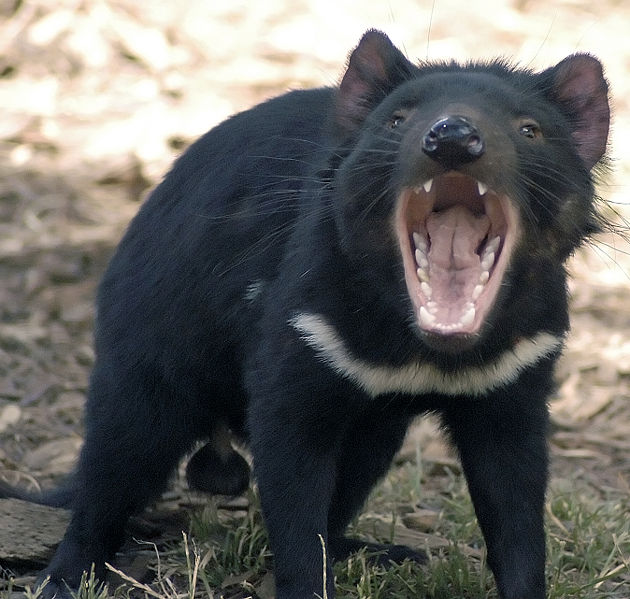The details in the devil - how a tumour is driving a sexual shift in Tasmania
Researchers in Australia have shown that the Tasmanian Devil, beleaguered in recent years by a transmissible fatal facial cancer, has responded to the disease threat by a dramatic change in its reproductive habits. 
Writing in this weeks PNAS, University of Tasmania scientist Menna Jones and her colleagues looked at devil population data from five locations around Tasmania. Prior to the appearance of devil facial tumour disease, the data shows, the animals lived an average of 5-6 years, began breeding from the age of two years and raised several litters of offspring over their lifetimes.
Now the animals, numbers of which have fallen by nearly 90% since the disease first appeared in 1996, are breeding once, at less than a year old, and may not even survive long enough to rear that litter.
The reason for this precocious sexual maturity isn't known, but scientists suspect that a combination of factors including less competition from other devils, reduced population density and more plentiful food may be responsible. What it means to the devils is even more unclear, although it could prove to be their salvation if it leads to the emergence of animals that are resistant to the disease, which is thought to behave like an infectious organ transplant spread when the animals fight and bite one another.
However, there are very few devils left and their genetic diversity across Tasmania is generally very low, which means that will be difficult for natural selection to pick out animals that are resistant to the disease and for these animals to replace the population. Consequently the team are not optimistic, sombrely suggesting that the animals may be extinct in the wild within 25 years.
"This novel disease could have catastrophic consequences for the Tasmanian devil," they said.
Reference: Published online before print July 14, 2008, doi: 10.1073/pnas.0711236105










Comments
Add a comment